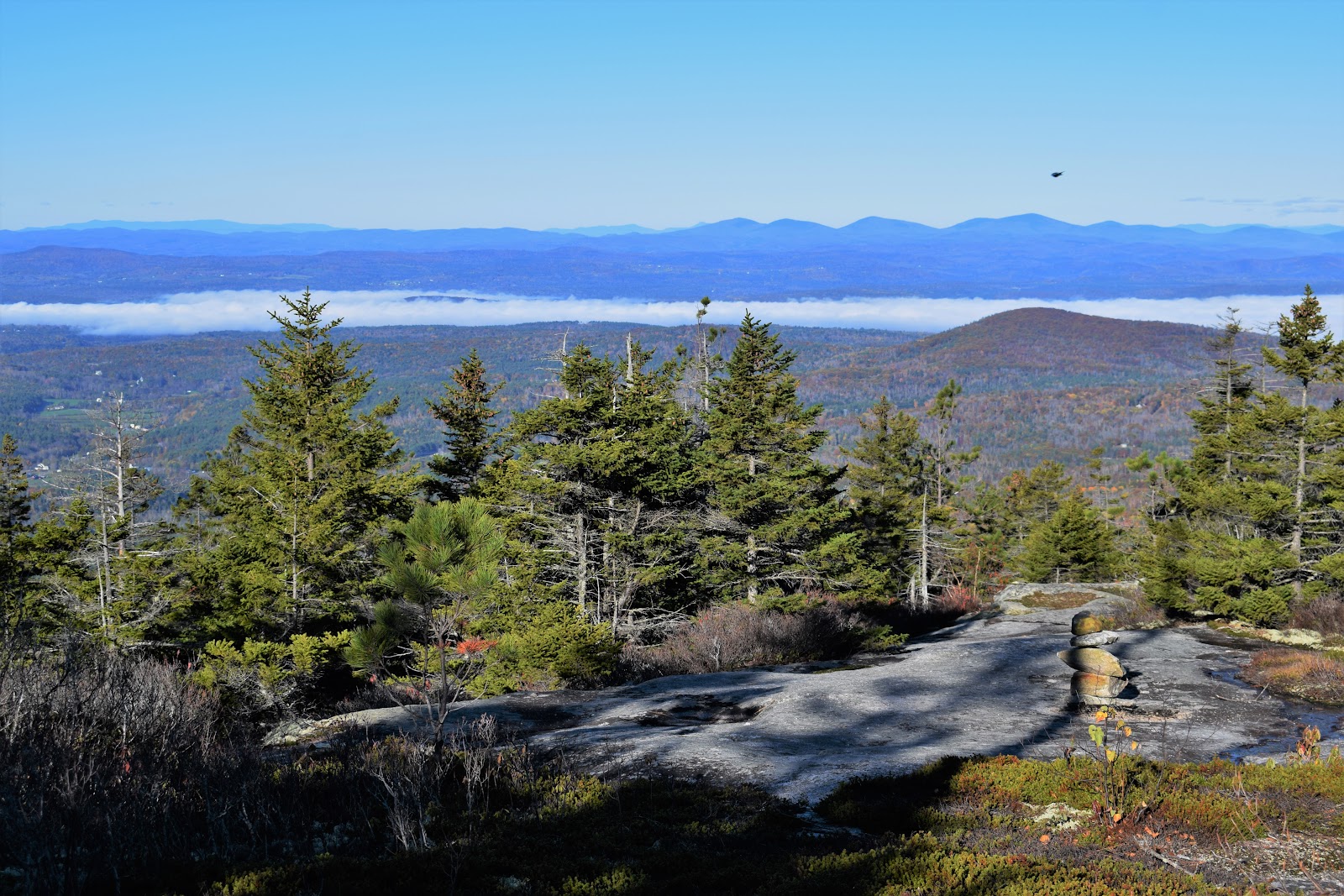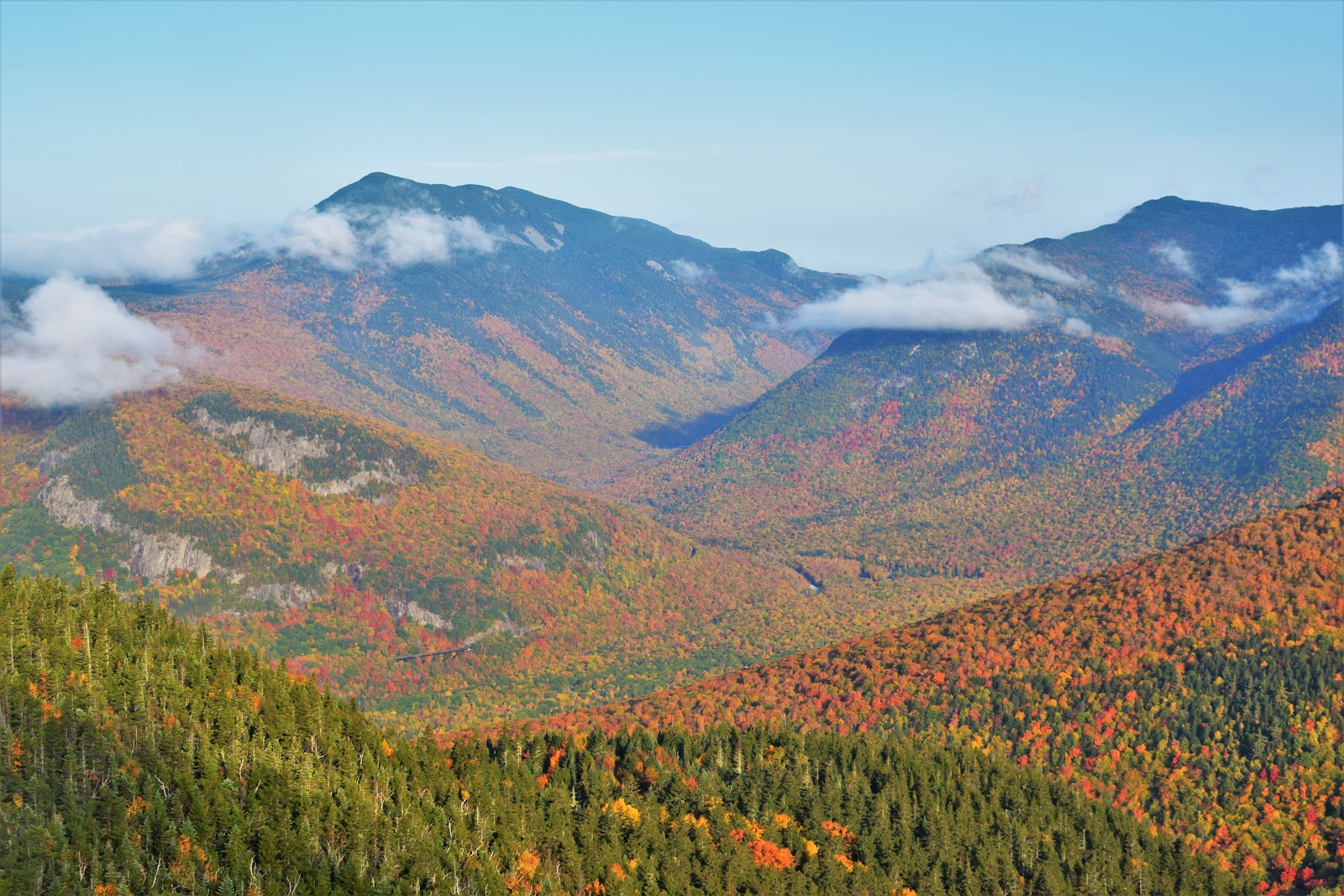Crawford, Resolution, and Stairs (White Mountain National Forest)
Hike Type: Out-and-Back
Distance: 10.3 miles
Elevation: 3,458 feet
Time: Unknown
Hiking Challenges: 52 With a View; Operation Alaska Benchmark Challenge
The Hike
I believe this was my longest solo-hike to date! And in hindsight, one of my all-time favorites. It was an early october Saturday morning, and I remember having an early wake-up time. I landed at the Davis Path trailhead just before sunrise - enough time for a short nap. Once the sun was higher in the sky, I started my hike along the Davis Path, enjoying the Cohos Trail signage and crossing the Saco River on the Bemis Bridge, a beautiful single-track suspension bridge. The fall foliage was absolutely popping in Crawford Notch, but the cloudy skies did give me a bit of pause!
"The Davis Path"
from trailside sign.
Abel and Hannah Crawford's son-in-law Nathaniel Davis built the Davis Path in 1845. The current path runs 14.4 miles through the Presidential Range-Dry River Wilderness and joins the Crawford Path near the summit of Mt. Washington. The Bemis Bridge is named after Samuel A. Bemis, who built the nearby granite mansion.
The Davis Path trailhead was protected in 2002 through the cooperation of the White Mountain National Forest, Ed Butler, Leslie E School, and abutting landowners, and the Trust for Public Land.
The Davis Path meandered through the woods relatively gently for a bit, and then entered the Presidential Range-Dry River Wilderness, which is where the steep climb began! This climb was a doozy, but eventually came to the first view, which revealed some lower hills with hazy foliage, covered in clouds. Naturally, it was disappointing to see the clouds, but it did make for some unique photos!
Just further up the trail I ran into a mysterious bird that I had never seen before - I would learn from facebook that it was a male Spruce Grouse. Little did I know these birds would soon become my sworn enemies! This one was standing tall and proud just off-trail, seemingly ready to fight.
I arrived at the spur trail to Mt. Crawford and began the climb up granite slabs, arriving at a mysterious, socked in summit, where I could only make out a few hazy hills. Then, what still remains as the most magical moment of my hiking career thus far (as of October 9th, 2024) happened. In a span of no more than 60 seconds, almost all of the clouds burned off, revealing some of the most beautiful foliage I had ever encountered. Crawford Notch looked incredibly dramatic from this angle, with the steep slopes of Mt. Willey and Mt. Webster bordering the winding notch, with the lower parts completely covered in vibrant, autumnal colors. I remember feeling a bit emotional here by the sheer beauty. It was the first time I really saw foliage at this magnitude, and the fact that the clouds waited for me to arrive before instantly burning off was really special. I didn't realize at the time, but I also had a nice view towards Mt. Resolution and Stairs Mountain, too.
After taking a million photos and enjoying my solitude, I descended back to the Davis Path and continued on. The Davis Path alternated between scenic, sometimes foggy slabs, and wet woods. I could definitely feel the remoteness of this area, which was equally cool and unnerving for someone who hadn't done too many (or any) big hikes like this by himself.
I made it to the Mount Parker Trail and turned up the suddenly rugged footway to the beginning slabs, which showcased even more views. There was one wet slab that was a little sketchy to traverse, but I made it over no problem. The view, yet again, were beautiful, and the foliage breathtaking. I took a break here for a snack and just enjoyed looking around at all of these peaks that, over the next few years, I would get to know very well. On the return trip to the Davis Path, I also got a nice view of Stairs Mountain.
Continuing along the remote Davis Path, I finally began to see more people! It was almost nice to find other humans, just to reassure that I wasn't fully alone. I passed the junction to the Stairs Col Trail and started up the steep, but short stretch to the shoulder of Stairs Mountain.
The Stairs Mountain Spur Path was flat, gentle, and easy, passed a few tentsites, and opened up to my third and final summit view of the day. The view from Stairs Mountain was more modest than the other two viewpoints, but had a wonderful, remote feeling. I chatted with a few people that were at the viewpoint for a bit. One guy was on his eighth round of the 48 and they were hiking all the way to Isolation - he also shared stories of hiking in Maine. One in particular was that he was off hiking a remote peak and when he finished, road crews fully removed a bridge on the access road. The crew apologized and told him it would be a few hours, so he just chilled and watched the show! I chatted with another couple about food, and I apparently became known as the "cheeseburger guy" according to a later Facebook post. I really enjoyed the equal solitude and sense of community I felt on this peak - it was just people as silly as me. I would go on to feel this on many other remote peaks, but I think this was the first time I was really like "oh these are my people." There was also a USGS survey reference mark! As of the time I'm writing this, I'm starting to get into "collecting" them and learning more about them.
My return trip felt pretty easy from Stairs to Crawford - I remember being blown away by the views that had opened up, and passing just a few folks. That was, until, the final descent from Crawford. I was truly swimming upstream downhill! I passed at least a hundred hikers heading up to enjoy the spectacular views, including a few groups of backpackers. One guy, in particular, loved the colors on my Cotopaxi windbreaker and pack and gave me the (complete) history on why the outdoor industry lost its fun colors (something about hippies and naturalists I think?).
I made my way back out of the wilderness, across the Bemis Bridge, and back to my car. The Conway Scenic Railroad was passing by right when I arrived, and I stopped at the Intervale Scenic Vista on the way home. It remains one of my favorite hikes to date!
Step-by-Step
- Park at Davis Path Trailhead.
- Start hike along Davis Path.
- At jct., turn right onto Mt. Crawford Spur.
- At summit, turn around.
- Turn left to continue on Davis Path.
- At jct., turn right onto Parker Trail.
- At summit ledges, turn around.
- Turn right onto Davis Path.
- At jct. with Stairs Col Trail, continue on Davis Path.
- At next jct., turn right onto Stairs Mountain Spur.
- At summit, turn around, follow Davis Path back to car.
Originally written and posted October 10th, 2024.


